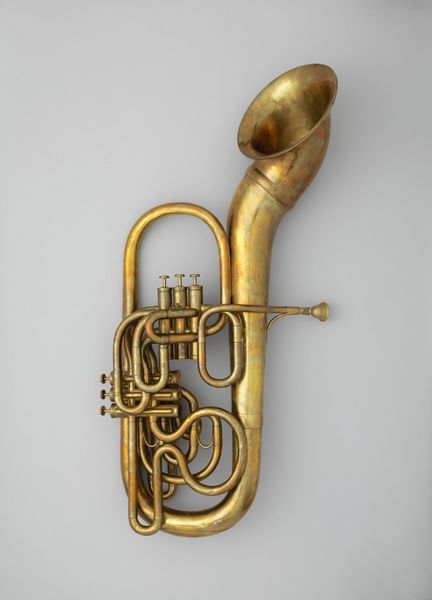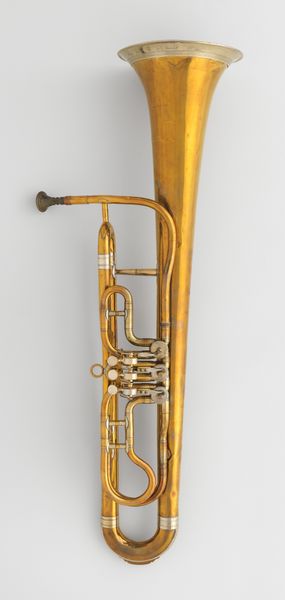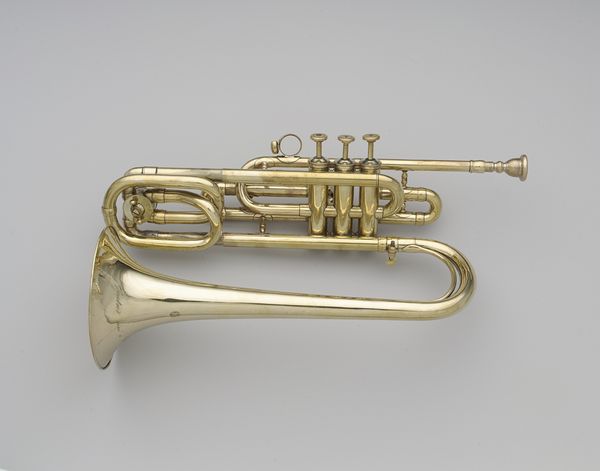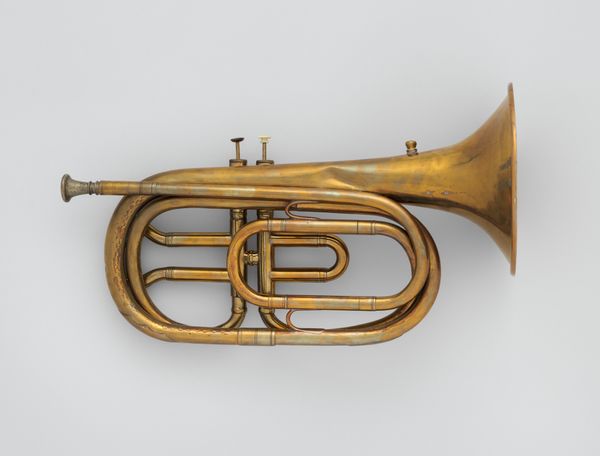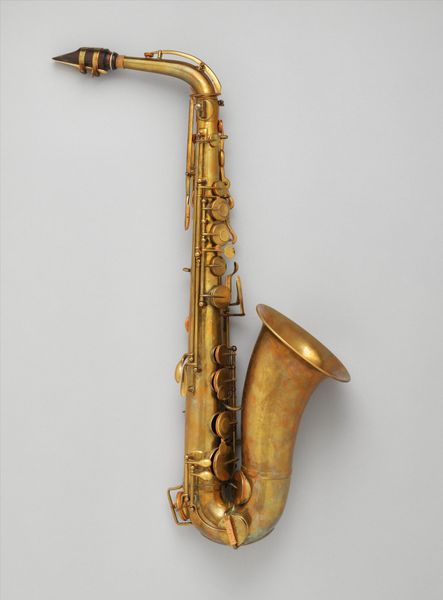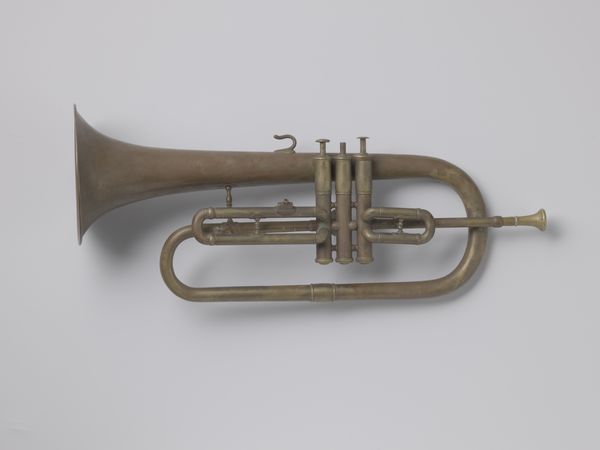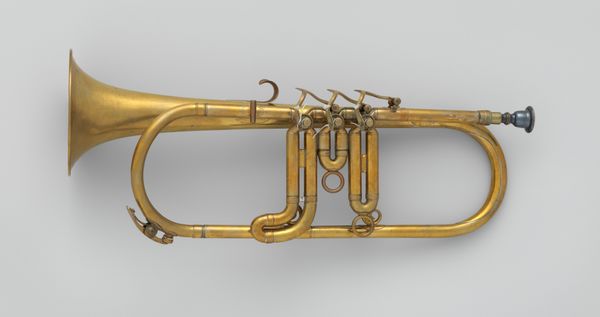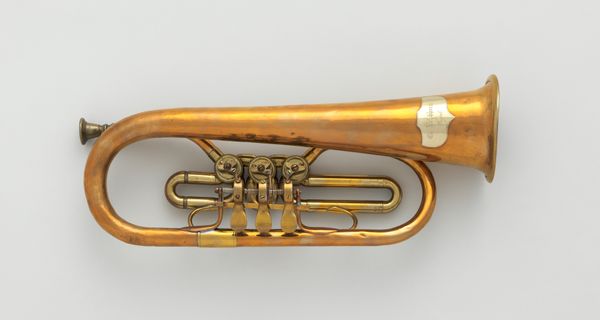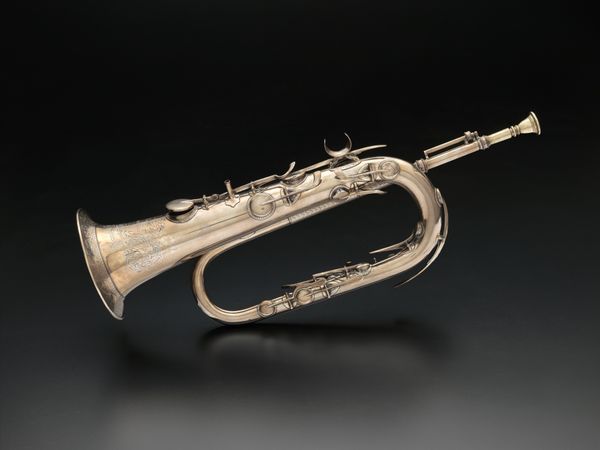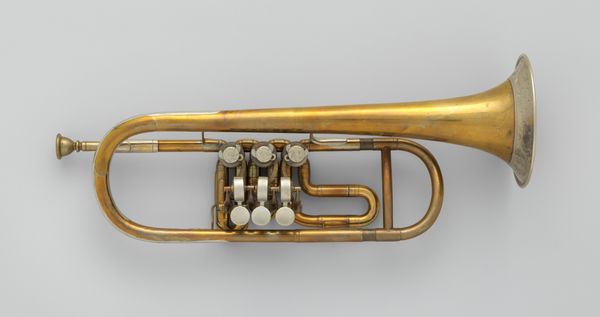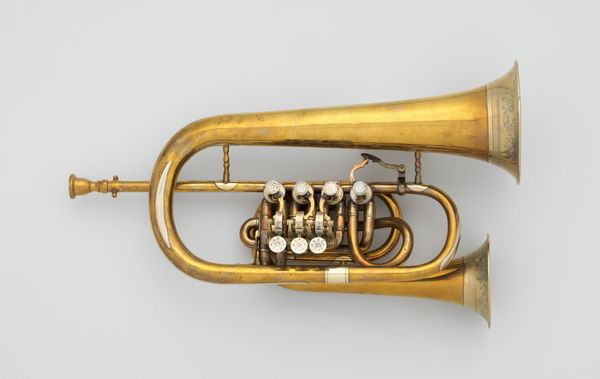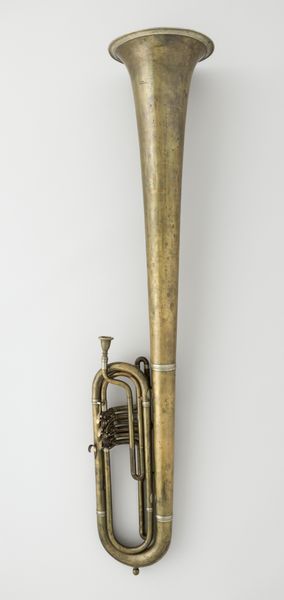
metal, bronze
#
metal
#
bronze
#
musical-instrument
Dimensions: 31 1/2 × 8 × 16 in., 7.9 lb. (80 × 20.3 × 40.6 cm, 3583.416g)
Copyright: Public Domain
This is a tuba, probably made in Germany in the late nineteenth century by the instrument maker C.W. Moritz. It's a complex, brass instrument with an imposing physical presence. But how did this object come to be in a museum? Looking at the social and cultural context, we might consider the rise of brass bands during the 19th century. They became incredibly popular in Europe and the United States, especially among the working classes. Mass production allowed instruments like this tuba to be manufactured and distributed more widely. The musical instrument industry became a big business, and the tuba, with its deep, resonant sound, became an integral part of the sonic landscape of the time. To fully appreciate this object, we can look at who played these instruments, where they performed, and what kind of music they played. The role of institutions like music schools and conservatories is important too. Only then can we understand its significance as a cultural artifact.
Comments
No comments
Be the first to comment and join the conversation on the ultimate creative platform.
